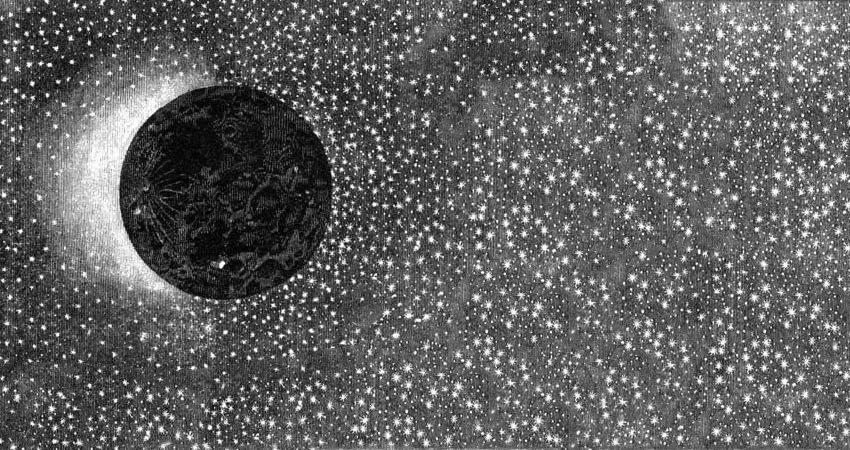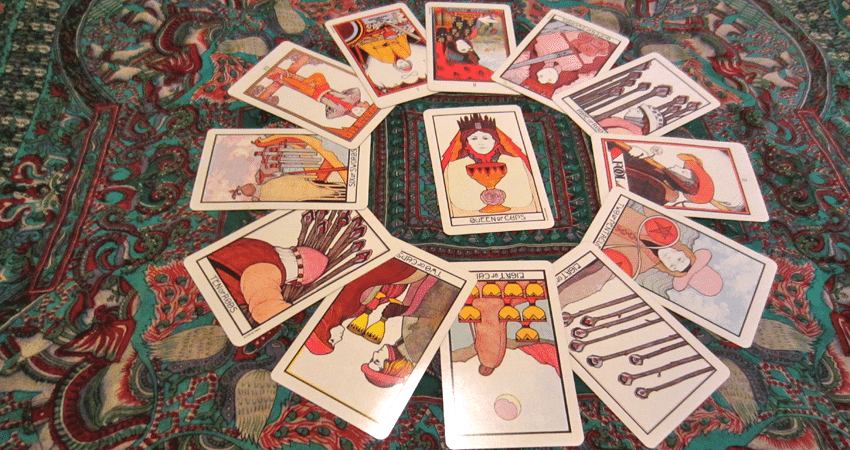
The March Solar Eclipse: An Otherworldly Opportunity
Categories: Guest Post Metaphysics & Unexplained Phenomena
The first Supermoon—when the moon is at its perigee, or closest point to Earth—of 2016 also coincides with the year’s first solar eclipse.
If you’re not one of the lucky few in its path of totality, you may still be able to get a glimpse of a partial eclipse if you live in parts of Asia, Alaska, or the Pacific Islands. Even if you don’t get to experience it for yourself, you’ll still feel its effects and, as Benebell Wen points out, have access to otherworldly openings
In today’s guest post, Wen— author of Holistic Tarot and the upcoming Tao of Craft— lays out the implications, opportunities, and historical context of today’s eclipse.
A total solar eclipse will take place on March 8, 2016 at around 11:20 p.m. Coordinated Universal Time (UTC)—that’s 3:20 p.m. Pacific for us Californians—with the maximum point of the eclipse occurring around 2:00 p.m. UTC the next day, March 9. At its maximum point, the solar eclipse will last for about 4 minutes. The moon will be at 15° in Pisces, Pisces being the last of the twelve zodiac signs. We will also see a stellium, or major cluster, of Mercury, Neptune, the moon, and the sun all occupying the horoscopic house of Pisces. If you’re not sure what any of that means, try this: per metaphysical theory, this solar eclipse would be a neat time to connect with the dead, do conjurations and summonings, commune with spirits, or take shamanic journeys into other-worldly realms.
A solar eclipse happens when a new moon aligns in between the earth and sun, and from our perspective, appears larger than the sun, blocking out its light. In astronomical terms, the moon occults the sun. (A nice pun there, given the occult meanings and metaphysical attributions ascribed to solar eclipses.) Occultation is when one celestial body is hidden from an Earth-bound observer’s view by another passing celestial body.
Euro-Western cultures of old believed that a solar eclipse was an omen of misfortune to come. It was said that at the crucifixion of Christ, God manifested a solar eclipse in the middle of a lunar month (significant validation of an act of God, because solar eclipses can only take place on a new moon). The word itself comes from the Greek word for “abandonment,” enkatáleipsi. The word described the belief—fear, really—that the light of the sun and moon had abandoned the people. A solar eclipse prognosticated disaster, portending a significant death or the downfall of a leader.
When Babylonian astrologers learned how to identify the timing of eclipses, they became charged with the responsibility of warning the court priests so that preparatory measures could be taken. The ancient Romans believed that eclipses were caused by the work of demons. Traditional Indian cultures, too, saw a solar eclipse as a sign of misfortune. Pregnant women were advised not to look directly into a solar eclipse for fear that doing so would cause the baby to be born with severe defects.
On the other hand, contemporary pagan communities tend to hold a different view of eclipses. An eclipse brings together the sun and moon, a form of sacred celestial marriage, the conjoining of god and goddess energy, and so a solar eclipse would be a time of raising consciousness to higher levels of being, a time of tempering opposites to birth something new. A solar eclipse is a time of reaping the benefits of psychic power that the moon raises on earth, given the close proximity between moon and earth at the time of the eclipse. The positioning results in the moon being imbrued with the energetic seeds of the sun, merging with the moon’s own powers, to manifest on earth as one coalesced energy force that could conceivably be tapped into for magical purposes.
From an esoteric Taoist perspective, spirits from the higher realms function on yang energy, whereas spirits from the lower realms function on yin. The sun was considered potent yang energy and the moon was potent yin. Thus, a solar eclipse, when the moon gained an advantage on earth over the sun, yin energy would be most prevalent on earth, empowering ghosts and lower realm spirits to come out and play.
In medieval China, solar eclipses were omens from Heaven to signify major changes to take place on Earth, thus affecting Man. According to mythos, a solar eclipse happened when a celestial dragon spirit would try to devour the sun. Spirits were believed to be given life through yin essence, and so to counteract the yin, yang essence had to be summoned forth. Fire, light, and the banging of drums were used to counteract the yin essence that was giving the dragon spirit its power.
Even today, with all our scientific knowledge, a total solar eclipse still inspires awe. When one is about to come, the media will talk about it. Everyday folk make plans to step outside at the appointed hour and take a look. As for the March 2016 eclipse, unless you live in Indonesia or Papa New Guinea, you’re not likely to see it. Yet the metaphysical implications of the total solar eclipse will still apply. If you’re open to it, it will be a night for powerful meditation experiences, connecting to spirit or ghostly energy bodies, or for communing with ancestors.
References:
- Espenak, Fred. (2013, December 09). Solar Eclipses: 2011 – 2020. NASA Eclipse Website. Retrieved here.
- Espenak, Fred. (2014, March 14). Total Solar Eclipse of 2016 Mar 09. NASA Eclipse Website. Retrieved here.
- Hawke, Elen. (2002). Praise to the Moon: Magic & Myth of the Lunar Cycle. St. Paul, MN: Llewellyn Publications, 25 – 30.
- Minnis, Alastair J. (1982). Chaucer and Pagan Antiquity. Suffolk, England: D. S. Brewer, 48.





No one has left a comment yet.